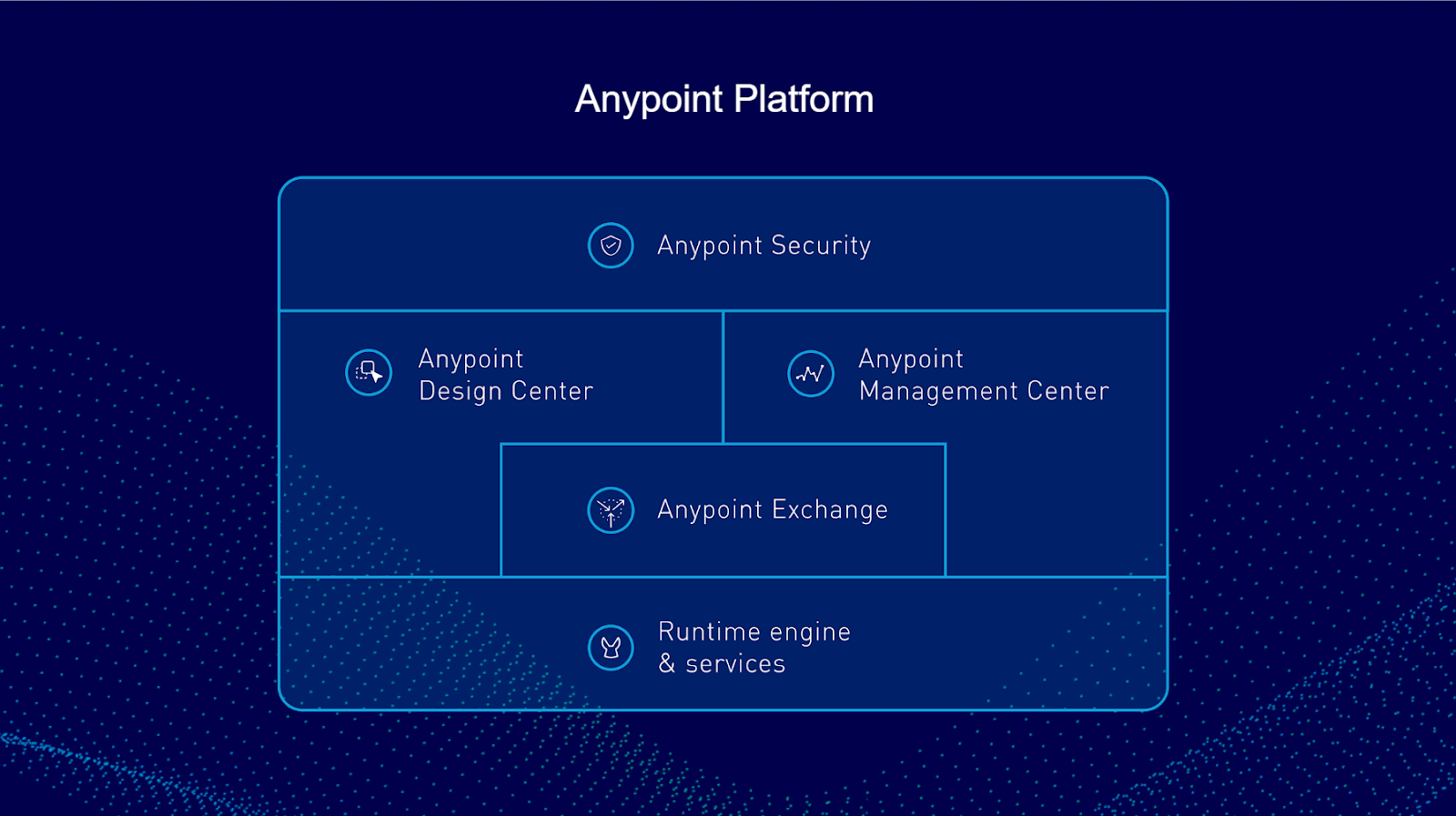About this series: Join MuleSoft product leaders every quarter as they share their vision and insights for Anypoint Platform, innovation in integration, and the future of API-led technology.
It is an amazing time in IT and an amazing time in business technology. We are at the crux of an en masse transformation where a convergence of different technologies — mobile, social, cloud, blockchain, big data — are reshaping business as we know it.
We are midst the rise of the application network and the democratization of innovation. Companies committed to building a composable enterprise — designed for speed, reuse, and agility — are now experiencing this transformation almost organically.
Before we look at this change and share our vision of the future, it helps to take a step back and review the basics of the topic at hand. Integration and APIs remain the foundation of this transformation. Let’s review the foundational patterns of integration.
The foundation of integration

- Migration pattern – One of the most common integrations, which I’m sure all of you use regularly, is the migration pattern which consists of moving a specific set of data from one system to another.
- Broadcast pattern – Also known as a “one-way sync from one to many” where a system is notified of a change to one or many different receivers of the information. I know many of you are working in a broadcast pattern where you publish information using a pub/sub approach.
- Aggregation pattern – This is the act of taking or receiving data from multiple systems and inserting it into one. A common example is when you bring together business processes to create a new composite application.
- Bi-directional sync – As the name suggests, is the act of combining two datasets in two different systems so that they behave as one, while still existing as different datasets. The need for this type of integration comes from having different tools or systems for accomplishing various functions from the same dataset.
- Correlation – This is a newer pattern design that identifies the intersection of two datasets and syncs bi-directionally only when it occurs in both systems. Correlation allows you to leave data where it is and query it in real-time.
While most of our customers use a variation of all of these integration patterns, what’s interesting is that our most successful customers use all of them in a single application. And as they do, a sophisticated application network emerges organically.
The rise of application networks in the enterprise
An application network is a network of all of your applications, data, and devices. These application organizations are plug and play. I want to make it clear that application networks are not just a concept — they are real and tangible. You can see them, modernize them, and digitize them. They provide tremendous value to your company through organization, discovery, and reuse. When you do that, you amplify the benefits of an application network, providing pluggable, reusable building blocks not just for your team, but also for other integrators beyond IT. Here are four ways an effective application network transforms the way your business runs.
- Fast and agile by design – Applications create a foundation for API ecosystems. You no longer have to wait for the whole application to be built to start using those APIs. This creates agility and flexibility for your immediate team, line of business teams, and, of course, partners. Different integrators can tap into various parts of the application network and build applications or integrations fast, but with the flexibility so it can be changed to address future needs.
- Security across endpoints – Within ecosystems, security is always a priority, especially now. You need to manage security and governance in a much more sophisticated way. As the world becomes more integrated, it’s not enough to lock the outside doors. We depend on connections with partners and they need access to your network without exposing your data to risk. You need a security fabric with machine learning to find threats, provide sensitivity analysis, and threat detection. You also need built-in security policies that can automatically updated and applied at the API-level, groupings of APIs and in different environments for different parts of your ecosystem.
- Dramatically lower costs – As you know, application networks drive lower development costs for you and the partners within your ecosystem. When you open up the APIs to external teams, you get outsized value for all participants in the application network. With reuse, teams work more efficiently and your company can run faster, creating a tremendous competitive advantage.
- Democratization of innovation – Finally, application networks allow you to democratize innovation, allowing other developers outside of the core team to build and do big things without the worry of a bottleneck. Application networks take your digital assets and amplify them across your organization.
Anypoint Platform was specifically built from the ground up to enable the creation of these application networks and work across all of these patterns. At the core, we have the Mule runtime engine that allows for data transformation, mediation, and orchestration, as well as integration of APIs and API policies. Around the outside, we have the capabilities to drive change within your organization, from design tools to collaboration inside Exchange, to your Anypoint Management Center. And of course, built-in throughout is advanced security.

Want to realize these benefits and more for your organization? Something you don’t see on a platform diagram are our MuleSoft Catalyst services, in which we work with your team on the strategy, approach, launch, and optimization of your processes and programs as they mature and scale. Developed from the insight of hundreds of different customers and a treasury of learnings, the Catalyst program brings together an outcomes-driven methodology, assets, and services to help you drive business transformation. Click to learn more








